Canada Remembers Times - 2011 Edition - Page 4
Peacekeeping in Cambodia
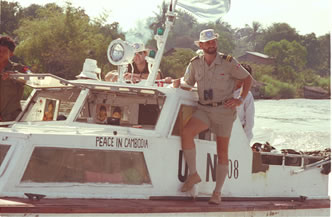
Canadian Forces members aboard a United Nations patrol
boat in Cambodia in 1992.
Department of National Defence
Imagine being a Canadian Forces peacekeeper in a war-torn country where a genocide had taken place, and where corruption, crime and weapons were everywhere. This was the situation often faced by more than 1,000 Canadian peacekeepers who served in the Southeast Asian country of Cambodia over the years.
Canadians first travelled to Cambodia in 1954 to help in the rocky transition from being part of the colony of French Indochina to becoming an independent country, along with Laos and Vietnam. The general unrest in the region and the harsh Khmer Rouge regime that sparked a genocide in Cambodia in the 1970s caused great instability. The Canadians returned to the country in 1991 as part of the UN effort to help restore peace. Approximately 700 Canadians shared their peacekeeping expertise in logistical support, ceasefire monitoring, headquarters duties and landmine clearing operations. Indeed, Canadian Forces members contributed to landmine clearance efforts until 2000 in a country littered with millions of the deadly weapons.
Canadian Forces Timeline

Canadian Forces members have served around the globe over the years, putting their lives on the line to help restore peace and freedom to countries in turmoil. Here is a world map with maple leaves representing some of the places in which Canadians have served in the postwar years.

Match the names of the places with the correct numbers on the map.
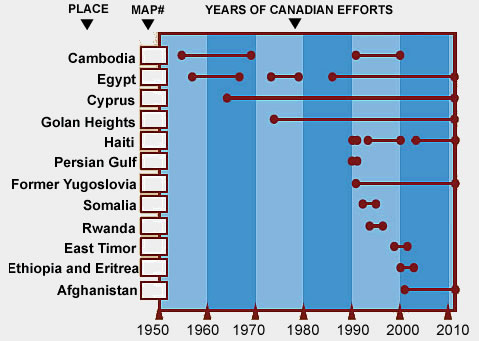
The Memorial Cross
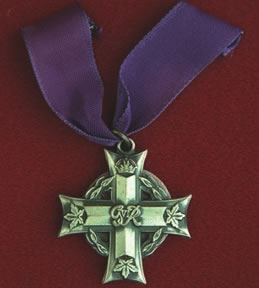
Memorial Cross awarded during the Second
World War.
Veterans Affairs Canada
The Memorial Cross was instituted following the First World War in 1919. The silver crosses are engraved with the name and service number of Canadians who were killed in active military service. Initially, they were only awarded to mothers or widows. The criteria were recently updated to include widowers and next of kin of Canadian Forces members who die in active service. When Captain Nichola Goddard became the first Canadian woman to be killed in combat in Afghanistan in 2006, her husband Jason Beam became the first widower to receive the Memorial Cross.
He Shoots, He Scores!
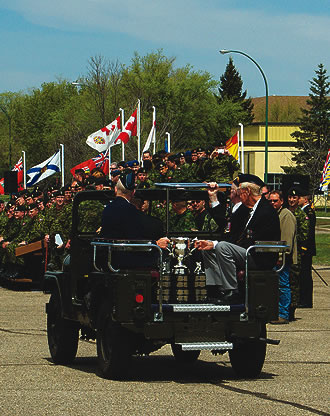
The Memorial Cup arrives at the rededication ceremony at CFB Shilo.
Department of National Defence
The Memorial Cup is awarded each year to the junior hockey champions of the Canadian Hockey League. It was donated in 1919 by the Ontario Hockey Association in honour of those who died during the First World War. The Cup is a symbol of remembrance, and it highlights a special connection between the Canadian military and the sport of hockey.
At the 2010 Memorial Cup Tournament in Brandon, Manitoba, the championship trophy was rededicated to recognize Canada’s war dead from all conflicts. Veterans from the Second World War and the Korean War escorted the Memorial Cup to the ceremony which took place at CFB Shilo.
A Scarf from the Queen
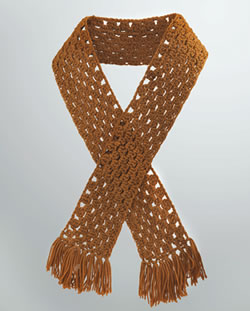
Private Thompson’s Queen’s Scarf.
CWM IL1965033-001.
Courtesy of the Canadian War Museum.
More than 7,000 Canadians served in the South African War between 1899 and 1902. During the war, four Canadians earned the Victoria Cross, the highest award for military valour. Private Richard Rowland Thompson, a Canadian medical orderly, enlisted with the 2nd Special Service Battalion of the Royal Canadian Regiment in Ottawa. He was actually nominated for the honour twice but was not awarded the medal. Queen Victoria learned of this and decided to do something special—she knitted long wool scarves to be given to him and to a handful of other soldiers whose great courage had not been officially recognized.
Every Stamp Tells a Story
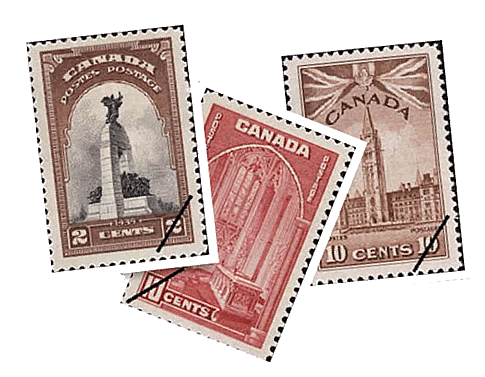
Library and Archives Canada Postal
0248, Postal 0232 and Postal 0238.
Canada Post has issued hundreds of stamps over the years related to our military heritage and to remembrance. Three of these touch on powerful symbols of remembrance located in the heart of our national capital.
The Peace Tower in Ottawa was dedicated to Canadians who died during the First World War. Inside can be found the Memorial Chamber which houses the seven Books of Remembrance, listing the names of more than 115,000 Canadians who have died in military service since Confederation.
Ottawa’s National War Memorial was unveiled by King George VI in 1939, just weeks before the outbreak of the Second World War. Every November 11, thousands of Canadians gather there and at local cenotaphs across the country to remember those who served. Why not explore Canada’s military heritage on stamps for yourself?
- Date modified: